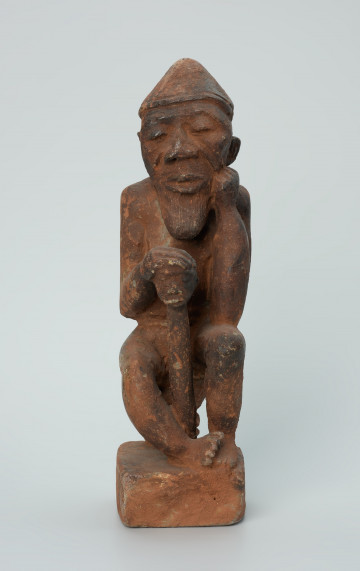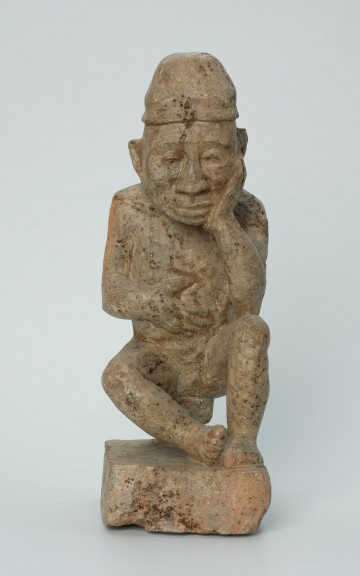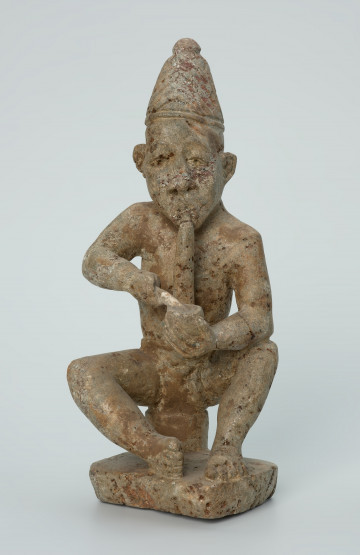
Ancestor worship figure
około 1901 — 2000
National Museum in Szczecin
Part of the collection: Mintadi figurines
The most popular mintadi (singular ntadi) figures include the representations of men in a sitting position with their legs crossed, heads supported by their hands and eyes partially closed and thoughtful. These representations are called fumani - thinkers.Stone is quite rarely used in Africa as a carving material; wood is more often. Stone figures are usually carved in steatite or chlorite slate. Steatite, known as tailor chalk, is a soft microcrystalline rock with a high concentration of talc and a grey, pink or greenish colour. Chlorite schist is also a soft rock composed of magnesium, flint and aluminium compounds and comes in whitish-grey and grey-brown colours. The carver uses the tools to carve wood, namely a knife and a punch with a narrow blade. African stone carving refers to the symbolic properties of this raw material, which is considered durable and indestructible. The stone images are not meant to be an external representation of the human image but an attempt to capture the ‘soul’ of the figure. The word mintadi in the Kikongo language means guardians, custodians. These objects date back to the 16th century. They were most commonly found in cemeteries where high-rank chiefs were buried and in places of public worship. Many of the mintadi were treated as relics, treasures of the chiefs and their communities. Since the 19th century, the style of the sculptures has undergone some transformations, but their function has remained the same.
Katarzyna Findlik-Gawron
Author / creator
Dimensions
cały obiekt: height: 32 cm, width: 12,4 cm
Object type
sculpture
Creation time / dating
Creation / finding place
Identification number
Location / status

około 1901 — 2000
National Museum in Szczecin

około 1901 — 1950
National Museum in Szczecin

około 1901 — 2000
National Museum in Szczecin
DISCOVER this TOPIC
Museum of King Jan III's Palace at Wilanów
DISCOVER this PATH
Educational path